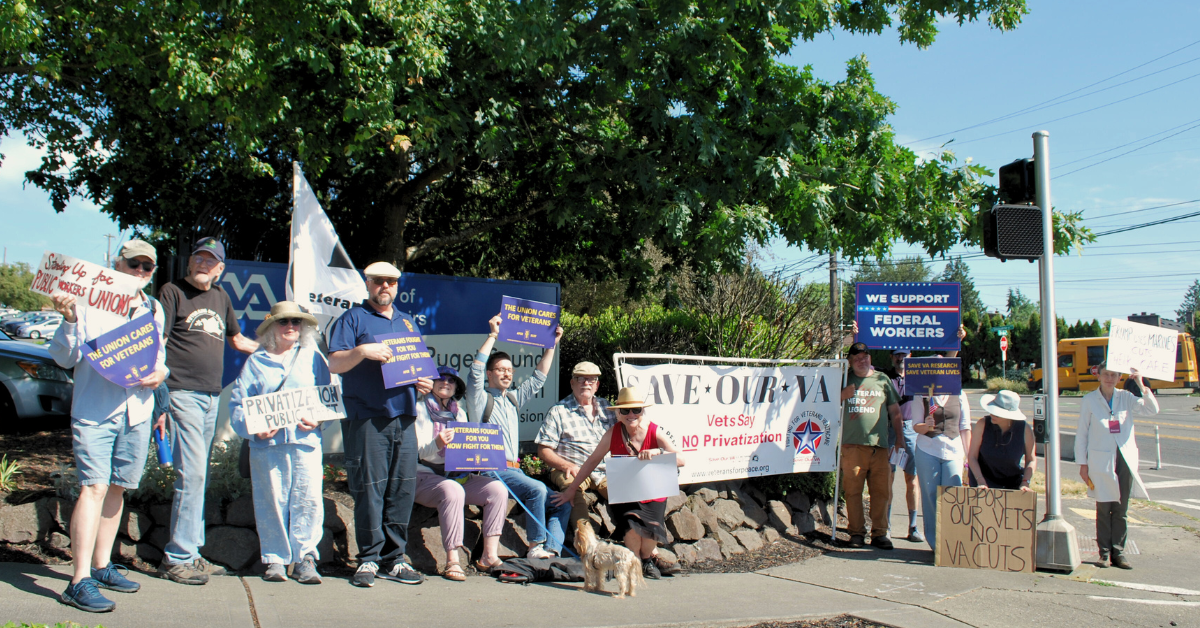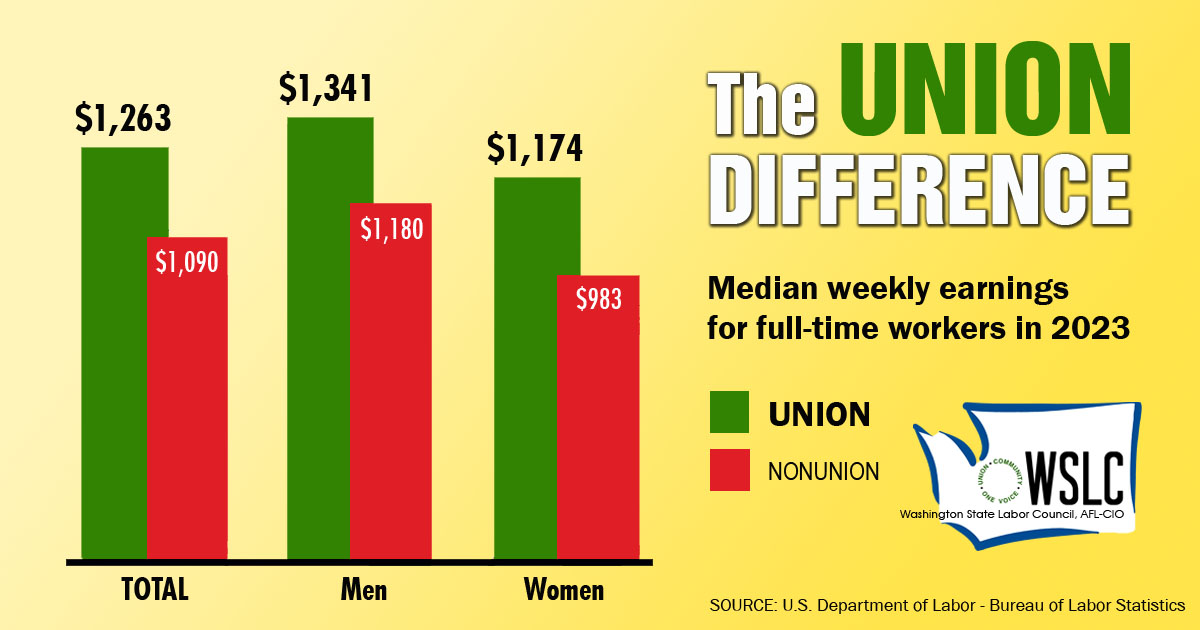LOCAL
‘We’re losing good people’
From gutting life-saving research to losing direct services, cuts to the VA medical system carry a high price for Washingtonians
SEATTLE, WA (June 17, 2025) — “You come to the VA, every single patient is complex.”
I’m standing on a busy street corner across from the Seattle Veterans Affairs Medical Center talking to Peter Hranek, a VA nurse and President of AFGE Local 3197, a union of around 2,700 workers at this facility. Hranek has worked at this VA facility for years, focused in difficult specialties like spinal cord injury and endocrinology. Like other healthcare workers in the VA system, his patients live with a mosaic of healthcare needs driven by their time in the service.
“I used to make comments about ‘sergeant syndrome,'” said Hranek with a chuckle. “If you’re a career sergeant, you’ve got your high blood pressure, your degenerative joint disease, you might have diabetes. And then that usually comes with congestive heart failure. You probably smoked in the service, so you have COPD.”
Nationally, more than nine million veterans get care through the VA healthcare system; thousands come to this facility in South Seattle where they can get treatment for complex health needs after years of service that take a toil on the body and mind.
But the Trump administration is targeting the already underfunded VA for more cuts, millions risk losing the holistic care needed to meet veterans’ medical, social, and mental health needs. Privatization, the universal cure-all pushed by the President’s corporate cronies, simply doesn’t provide the level of care available through the largest integrated healthcare system in the U.S., run by the VA. Nor are healthcare workers in the private sector necessarily equipped; education on military-related conditions like PTSD isn’t required for private practitioners, leaving gaps in care.

Protestors, including AFGE Local 3171 President Peter Hr, outside the VA medical center in Seattle.
So workers like those here in Seattle and their allies are taking to the streets to sound the alarm. As about a dozen protestors wave signs on a sunny Tuesday afternoon, a steady stream of rush hour traffic goes by, drivers honking their horns and yelling support out open windows. Pedestrians stop to talk with the protestors, taking pamphlets detailing the losses headed to the VA if this administration gets its way.
And those losses are deep. While the federal administration claims no “mission critical” roles are impacted by their attempts to slash staff through what is known as a reduction in force (RIF) or DOGE’s deferred resignation scheme, Hranek points out that nurses like him — currently considered exempt from the RIF — can’t functionally perform their duties without the work of these supposedly-expendable staff stocking supplies, cleaning rooms, fixing damage to the facility, and designing functional treatment spaces.
While these attempts to cut jobs are supposedly in pursuit of government efficiency, Hranek points out the obvious flaw in that logic. “With a deferred resignation program we’re paying people to do nothing for several months,” he said. “It’s not efficient. It’s literally just throwing money away.”
And crucially, layoffs and deferred resignations aren’t the only ways VA medical centers like the one on Beacon Hill are losing staff.
“Even if you’re exempt, you’re still in this hostile environment,” said Hranek. “Nurses are exempt from the RIF. But the situation is just so hostile, they’re like, ‘yeah, I want to get out of here.'”
No one gets rich working at a VA medical center. The healthcare workers who take these jobs do it because they care about the patient population, and they want to tackle the challenge of providing complex care. But unrelenting attacks on federal workers are taking a toil.
“I assumed I would just do 30 years in the VA, no problem as a nurse,” said Hranek. “Now, I’ll make it to 20 but I’m not gonna make it to 30. There’s no way.”
Cuts to the VA will inevitably harm veterans. But the ripple effects of losing funding and staff reach far beyond military communities.
Two doctors at the picket shared another lesser known but vital function of the VA: training. Both doctors spent part of their training years at VA medical centers, here in Washington as well as in other states. This is common for mental health professionals, per the two practitioners, but doctors across specialities — along with nurses, physical therapists, and social workers — train at the VA, too. Most of these healthcare workers go on to work with civilian populations. That means cuts to the VA can impact the quality of care available to everyone in the community, not just veterans. 
Workers at VA medical centers also lead crucial research, deep dives into understanding health and treatment that companies won’t pursue, as it’s not research likely to turn a profit. But that research is vital for vets and civilians alike. Studying the respiratory system impact of exposure to open air burn pits like those used by the U.S. military in Iraq and Afghanistan provides important learnings on respiratory health, valuable to anyone exposed to toxic smoke and fumes. Researching care for transgender veterans could help improve health outcomes for transpeople across the U.S, a population deeply in need of compassionate, robust healthcare.
Faced with a system that needs more resources, it’s hard to make sense of attempts to gut staff and cut funding.
“We had shortages even before this,” said Hranek. “Maybe some came back, maybe some don’t. One of the people we lost in February had been here 27 years as a researcher.”
Facing a full-on assault on their livelihoods and their patients, VA healthcare workers like Hranek have a simple ask:
“We need to get people outside, union members and their families, pressuring Congress, especially in red areas or purple areas represented by Republicans.”
While the fate of the VA snakes its way through the courts and congress, the protests outside the Seattle facility will continue every Tuesday from 3:00 p.m. to 6:00 p.m.





